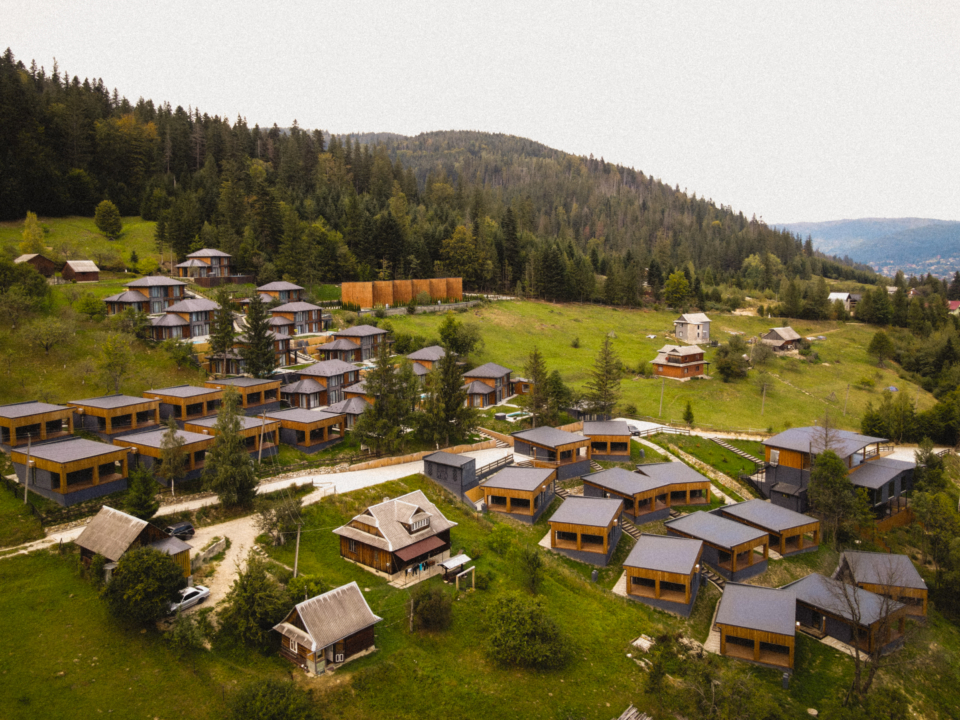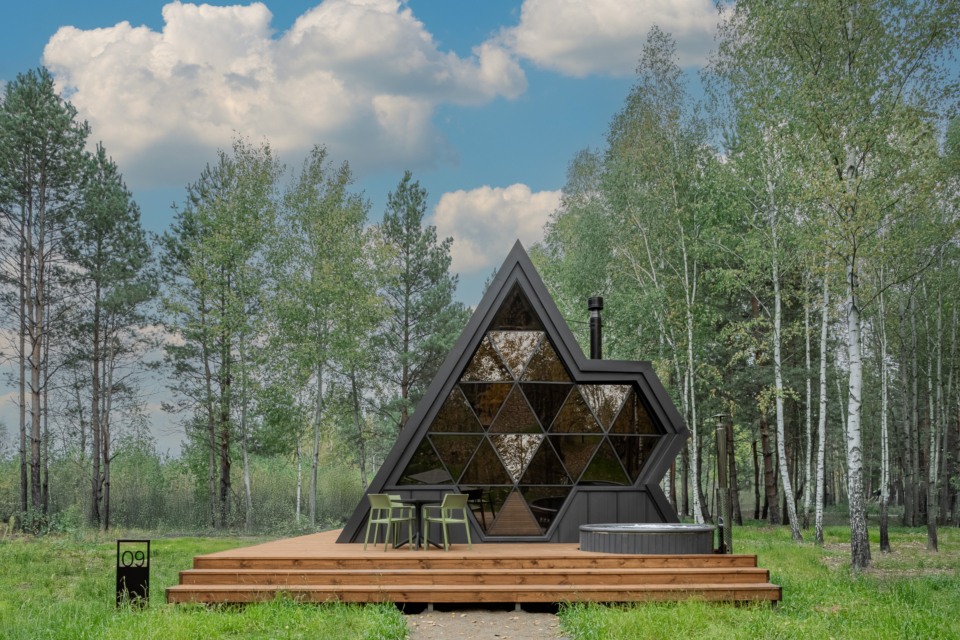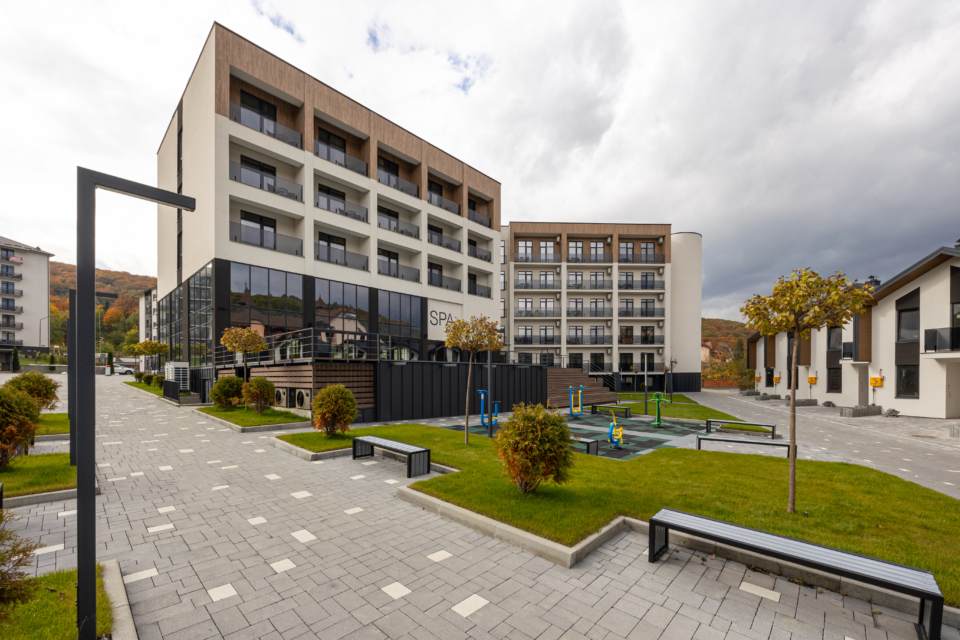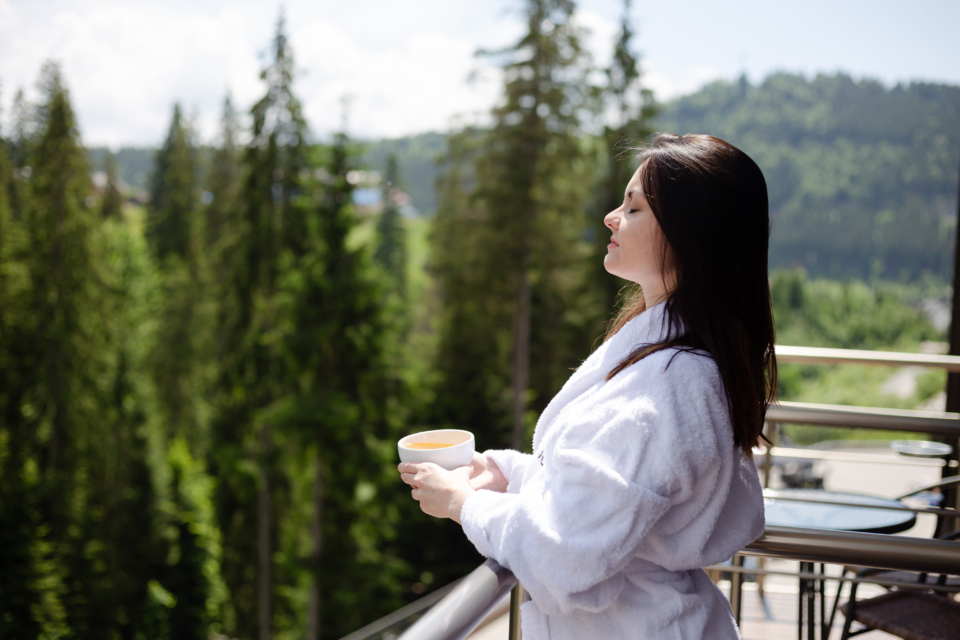How Does Hotel Lighting Affect Your Guests’ Mood?
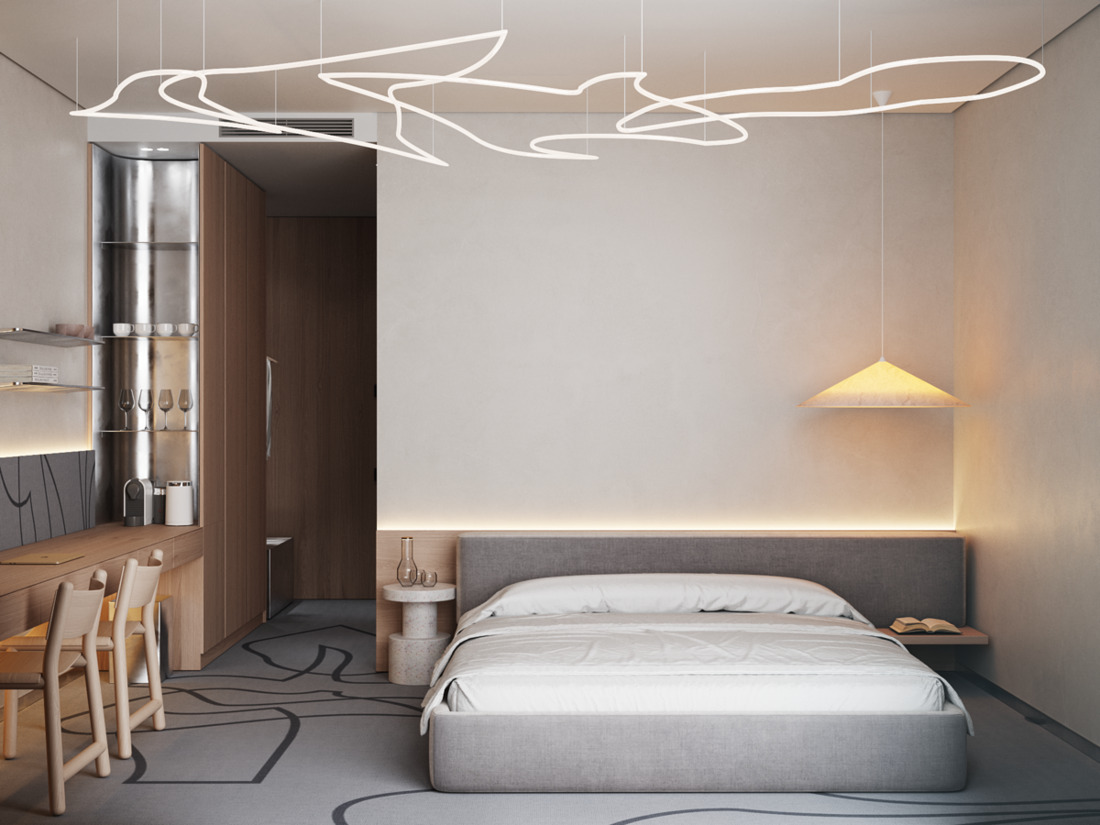
By Tetiana Morozova, a lead architect at Ribas Hotels Group, сo-founder & CEO of TEMO hotel design
Hotel lighting can have a huge impact on your guests’ mental well-being, in particular, lighting power, temperature and color can affect your guests’ mood. For example, white cold light can stimulate activity and concentration, while warm light creates a cozy atmosphere for relaxation. However, lighting may vary in the hotel’s areas depending on the functional purpose, hour of the day and weather factors.
Lighting design trends
Ukrainian culture-inspired lighting fixtures should be mentioned among the trending designs. They are growing increasingly popular both in Ukraine and abroad.
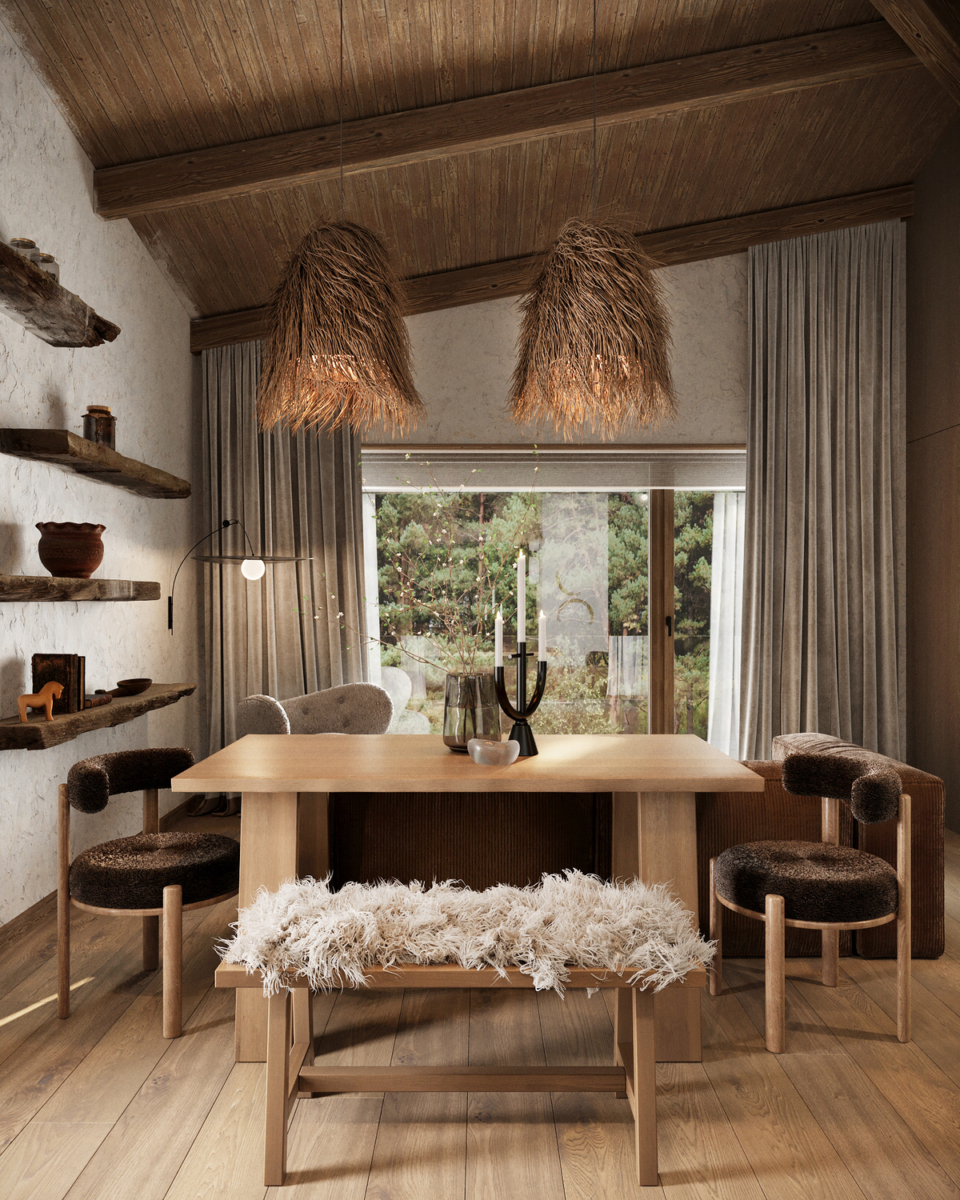
Straw lamps in the living room in the POTAY project managed by Ribas Hotels Group. Interior design developed by Temo hotel design.
There is also a shift in the market from the classic approach to lighting to find more user-friendly and innovative solutions. The trend used to be to have a lot of spot lights, but this approach is now outdated. Today, the trends are changing towards finding more comfortable lighting, even without fixtures on the ceiling. New layouts feature lights on the walls, floor or even as strings between the walls. There is also a special focus on table standing lamps, which are gaining even more variety in design and functionality.
Another current design trend that I like is fixtures with colored glass. They add a more unique and aesthetic touch to the interior. We can even see these in TikTok videos.
Lighting scenarios in different areas of the hotel
When designing a hotel, different lighting scenarios should be considered for the rooms, lobby, spa and grounds. After all, the facility operates in completely different ways in the morning, afternoon and evening, and needs to be lit differently.
Restaurant. For example, lighting in a restaurant with a Swedish line in the morning should be well designed to let guests feel comfortable choosing their breakfast dishes. The evening ambiance of the place requires dimmed light, with accents on the tables. In the area near the stage, lights should create the proper atmosphere, emphasizing the event.
In the restaurant, lighting does not only play a functional role, but also contributes to providing a pleasant environment for the guests. This is achieved with the power and temperature of the light. It is also essential to consider the decorative aspect of lighting. In some restaurants, you may notice an overuse of bright lights on the ceiling. This can distract guests from food and the ambience.
Lobby. This space requires a variety of lighting scenarios, which is somewhat similar to our approach to restaurant lighting. A lobby is a place where guests usually relax, spend time and socialize, so the lights should be dimmed in the evening. We are typically guided by the temperature of light, we try to keep it at 3-3.2 thousand Kelvin, because at this temperature people’s skin looks the most natural and attractive, which will be positively portrayed in the photos of the guests.
So, in the lobby there are usually several zones with armchairs and sofas, with a desk, and in our recent projects we opted for a fireplace to give the atmosphere a cozy feel. The lighting is slightly different in each zone. For example, for the armchairs and sofas we use dimmed, warm lights, while for the desks we use slightly more luminous lighting, including optional desk lamps. Lighting below eye level also works well in the lobby, creating a comfortable environment for guests.
Room. The hotel room should be fitted with different types of lighting to meet all the needs of the guests. First of all, we do recommend to provide a welcome light as it is a key element for the hotel rooms, which creates a cozy atmosphere. The light is activated when the guest enters the room, that is before the guest has even inserted the key card into the cardholder. Subconsciously, the lack of lighting can trigger a sense of danger in people, so it is important that the room is illuminated at the entrance.
There should be general lighting in the room, and other options include a floor lamp or a light at the head of the bed to create a dim light. You should consider providing a directional light at the bed for comfortable reading. If there is a work area in the room, a small floor lamp or a lamp with directional light can be a very convenient solution, especially in business hotels.
As for the bathroom, you need to consider its lighting with special attention. The backlight on the mirror above the washbasin, although popular, does not always illuminate the face well. The light fixture should be positioned so that the light is diffused and directed towards the face at eye level. Overall, it is common practice to use neutral-temperature light in bathrooms, rather than cold light.
Illuminating bathrooms at night is also an important consideration. A good solution may be to dimly illuminate the washbasin cabinet or other elements without dazzling the guest and without using the main light.
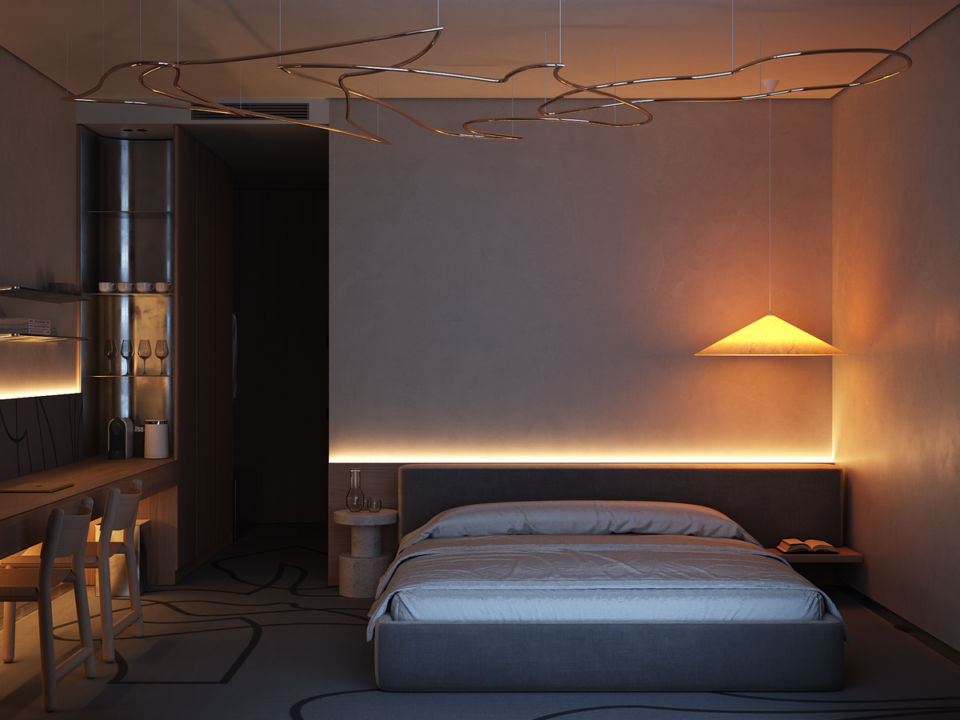
Different lighting scenarios in the room. The Melis Hotel managed by Ribas Hotels Group. Interior design developed by Temo hotel design.
SPA. This is an interesting location in terms of lighting, especially when it comes to swimming pools. The water can use light as a decoration because it is constantly moving, which creates a great lighting effect. Typically, spas use dimmed lights that are adjusted according to time and weather conditions to make guests feel more relaxed. It is crucial to keep the spa area from being too dark. The light power and temperature can vary in different areas, in particular by the pool or in saunas. You can use out of the box lighting solutions in this space, which makes accents and catches the guests’ attention.
Grounds. Street lighting is often overlooked, but it is really important for the atmosphere inside the building. This is especially true for cottage towns, where the size of the grounds differs from hotel complexes. And people do not feel comfortable to stay in a cottage without light outside the window. The guest’s experience starts as early as outside the hotel walls. A guest may sometimes arrive in the evening, so it is important that the grounds are attractively lit. Even with plain paving tiles, it is worth using an interesting light fixture with a pattern that illuminates the path to the hotel entrance. We are going to implement this solution in a future hotel complex in Ternopil. Specially designed light fixtures will point downward and illuminate the pavement of the walkways, replicating the water pattern.
Landscape lighting can make a big difference in the comfort of living. Even a slight illumination of the tree crowns next to the building already makes the surroundings more pleasant. It is key to keep the balance so as not to create bright, but cozy, softened lighting.
Are there any lighting standards?
The Ukraine’s National Building Code (DBN B.2.5-28:2018 Natural and Artificial Lighting) sets standards for lighting power in various occupancies.
When developing a design project, it is essential to perform a lighting calculation for each room, which allows you to predict whether there is enough light for a comfortable stay. This is a key milestone that helps anticipate the look of the room and ensure the right amount of light fixtures.
Ribas Hotels Group has its own standards that regulate the light intensity in each zone. These standards are checked by the hotel operator before starting to manage the hotel. This practice is implemented not only in Ribas Hotels Group, but also in large international chains. This is extremely important as compliance with standards ensures the guests’ comfort.
Subscribe to our blog to never miss out on hospitality market news!






